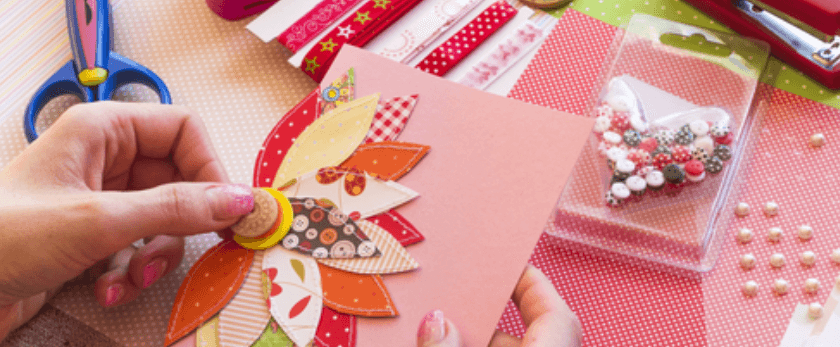Welcome to the world of homemade greeting cards! In today's fast-paced and consumer-driven society, it's easy to overlook the impact our everyday choices have on the environment. From the materials we use to the way we dispose of them, every decision we make can either contribute to or help alleviate the growing environmental crisis.
One simple yet effective way to reduce our carbon footprint is by making our own greeting cards. Not only is it a fun and creative activity, but it also helps reduce waste and promotes a more sustainable lifestyle. In this article, we'll explore the negative impact of store-bought greeting cards on the environment, the benefits of making your own, and provide step-by-step instructions on how to create your own eco-friendly greeting cards.
Why Store-Bought Greeting Cards are Bad for the Environment
-
Trees are cut down for paper production: According to the Greeting Card Association, approximately 7 billion greeting cards are purchased in the United States each year. That's a lot of paper! The production of paper requires the cutting down of trees, which contributes to deforestation and habitat destruction.
-
Energy and water consumption: The production of paper also requires a significant amount of energy and water. This energy comes from non-renewable sources, such as coal and natural gas, which contribute to air pollution and greenhouse gas emissions. Additionally, the paper-making process uses a large amount of water, which can strain local water resources.
-
Chemicals and toxins: The paper-making process also involves the use of chemicals and toxins, such as chlorine and bleach, which can pollute waterways and harm wildlife.
-
Transportation emissions: Store-bought greeting cards are often produced in one location and then shipped to various stores, resulting in transportation emissions. This adds to the carbon footprint of the product and contributes to air pollution.
-
Non-recyclable materials: Many store-bought greeting cards are made with non-recyclable materials, such as glitter, foil, and plastic. These materials end up in landfills, where they can take hundreds of years to decompose, if at all.

Why Making Your Own Greeting Cards is Better for the Environment
-
Reduces waste: By making your own greeting cards, you are reducing the amount of waste that ends up in landfills. You can use recycled materials or repurpose items you already have at home, such as old magazines, newspapers, or fabric scraps.
-
Saves energy and resources: Making your own greeting cards eliminates the need for energy and resources used in the production and transportation of store-bought cards. This helps reduce carbon emissions and conserves natural resources.
-
Promotes creativity: Making your own greeting cards allows you to tap into your creativity and create unique and personalized cards. This adds a personal touch to your greetings and makes them more meaningful.
-
Supports local businesses: If you choose to purchase materials for your homemade cards, consider buying from local businesses or artisans. This supports the local economy and reduces the carbon footprint of your materials.
-
Encourages a sustainable lifestyle: By making your own greeting cards, you are taking a small but significant step towards a more sustainable lifestyle. This can inspire others to do the same and create a ripple effect of positive change.
What You'll Need
- Recycled paper or cardstock
- Scissors
- Glue or tape
- Markers, colored pencils, or paint
- Stamps, stickers, or other decorative materials (optional)
- Envelopes (optional)
Directions
-
Choose your materials: The first step in making your own greeting cards is to gather your materials. As mentioned earlier, you can use recycled paper or cardstock, or repurpose materials you already have at home. Get creative and think outside the box!
-
Cut your paper: Once you have your materials, cut your paper or cardstock to the desired size for your card. You can use a ruler to ensure straight edges or go for a more rustic look with uneven edges.
-
Fold your paper: Fold your paper in half to create a card. You can also fold it into thirds for a tri-fold card.
-
Design your card: This is where your creativity comes into play. Use markers, colored pencils, or paint to create a design on the front of your card. You can also use stamps, stickers, or other decorative materials to add a personal touch.
-
Write your message: On the inside of the card, write a personalized message for the recipient. This adds a special touch to your homemade card and makes it more meaningful.
-
Add finishing touches: You can add additional decorations or designs to the inside or back of the card if desired. You can also use a stamp or sticker to seal the envelope.
-
Send or give your card: Your homemade greeting card is now ready to be sent or given to the recipient. They will appreciate the time and effort you put into creating a unique and eco-friendly card just for them.
Conclusion
By making your own greeting cards, you are not only reducing waste and promoting a more sustainable lifestyle, but you are also creating a personal and meaningful connection with the recipient. So the next time you need a greeting card, skip the store-bought option and get creative with your own homemade card. Your wallet and the planet will thank you.










